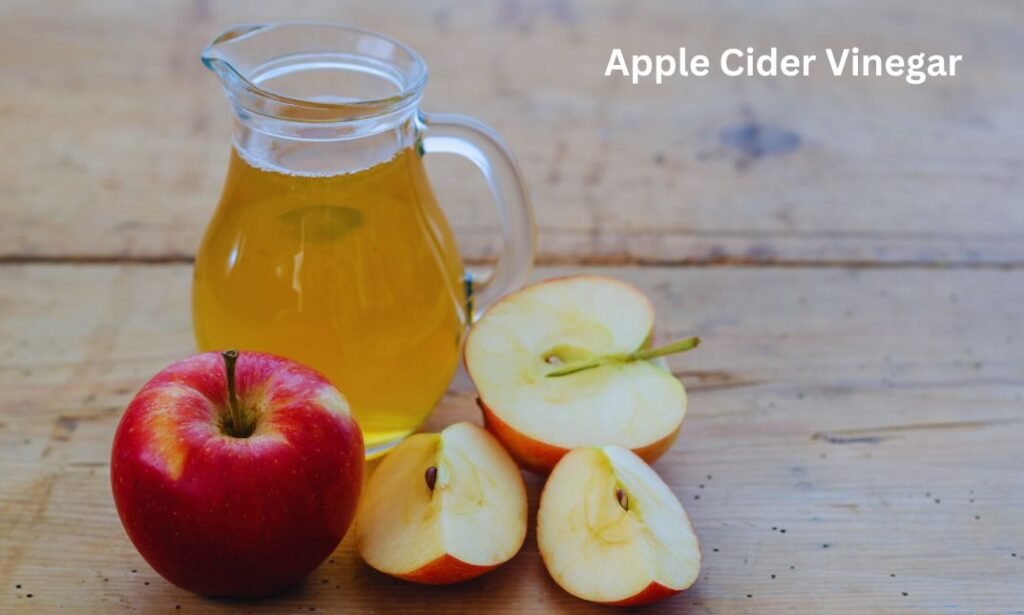How to Make Apple Cider Vinegar from Scratch (At Home)
Apple cider vinegar (ACV) is a type of vinegar produced by fermenting apple cider. The cider itself is the unfiltered juice obtained from crushed apples. It has been a staple in kitchens and medicine cabinets for centuries. In fact, it has even been used by the ancient Egyptians as a healing tonic! As a result, ACV holds a rich history.
Today, it’s a popular ingredient for its tangy flavor that lifts the taste of salad dressings, marinades, and sauces. However, ACV’s appeal goes beyond the culinary world. It’s widely recognized for its health benefits and medicinal properties. Namely, some medical uses include aiding digestion, regulating blood sugar, and promoting weight management!
Why Make Your Own A
CV?There are several advantages to making your own apple cider vinegar at home:
-
Control over Ingredients:
You can choose organic apples and avoid any additives or preservatives that might be present in commercially produced ACV.
-
Cost-Effective:
Making ACV at home is significantly cheaper than buying it from the store, especially if you use leftover apple cores and peels.
-
-
Reduces Waste:
Utilizing leftover apples for ACV production minimizes food waste and promotes sustainability.
The Science Behind Apple Cider Vinegar
The magic behind ACV’s creation lies in a biological process called fermentation. It all starts with the natural sugars present in apples. When these sugars come into contact with yeast (introduced naturally or through added sugar), they transform into alcohol. Then, good bacteria take center stage, converting the alcohol into acetic acid, the main component that gives ACV its signature sour taste and vinegar-like aroma. This remarkable transformation is what unlocks the unique properties and potential health benefits associated with ACV
Gathering Your Supplies
Equipment:
-
Glass Jar(s):
Choose a glass jar with a wide mouth for easy access and cleaning. A 1-gallon jar is a good size for a first batch. However, you can adjust it based on how much ACV you want to make.
-
Cheesecloth/Coffee Filter:
This will allow air circulation while keeping out unwanted critters and dust.
-
Rubber Band:
Secure the cheesecloth or coffee filter over the jar opening.
-
Spoon:
For stirring the initial mixture.
Apples:
-
Organic Apples (Preferred):
Using organic apples minimizes the risk of residual pesticides in your vinegar.
-
Variety:
Any type of apple will work! Experiment with different varieties to see how the flavor of the apples influences the final product. Some popular choices include tart apples (Granny Smith) for a sharper vinegar or sweeter varieties (Gala) for a milder taste.
-
Apple Scraps:
Don’t waste those cores and peels! You can use them to make ACV instead of whole apples. Just make sure they aren’t browned or bruised.
Optional Ingredients:
-
Sugar:
While not strictly necessary, adding a little sugar (brown sugar or raw honey) can kickstart the fermentation process, especially if your apples are not very ripe.
-
Starter Vinegar/Mother:
This is the gelatinous film that forms on the surface of commercially produced ACV. Adding a spoonful of starter vinegar to your batch can significantly speed up the fermentation process.
The Recipe
-
Preparing the Apples
Begin by washing your apples thoroughly under running water. Pat them dry with a clean cloth. You can use whole apples, chopped into roughly 1-2 inch pieces, or opt for leftover apple cores and peels. Regardless of your choice, leave some headspace in the jar – about 2-3 inches from the top – to allow for expansion during fermentation.
-
Creating the Apple Cider Base
Transfer your prepared apples (whole, chopped, or cores/peels) to your clean glass jar. Now, add room-temperature water to the jar, filling it almost to the top but leaving the designated headspace. Remember, the apples will displace some liquid. Here’s where the sugar comes in (optional): for a faster fermentation process, add 2 tablespoons of granulated white sugar (unbleached is preferred) per quart-sized jar. Stir the mixture gently until the sugar dissolves completely.
-
Initiating Fermentation
Once your apple cider base is ready, it’s time to create the perfect environment for the magic of fermentation to happen! Cover the jar loosely with a cheesecloth or coffee filter secured by a rubber band. This allows air to circulate while preventing unwanted insects or debris from entering the jar. Now, find a warm and dark location for your jar. Ideally, the temperature should be around 68-77°F (20-25°C) as this promotes optimal activity from the friendly bacteria responsible for the fermentation process. Avoid placing the jar in direct sunlight, as this can hinder the process and potentially damage the final product.
-
- Straining the Liquid
After 1-2 weeks, you’ll start noticing signs of fermentation – a slight fizziness, a cloudy appearance in the liquid, and possibly a pleasant, slightly sweet aroma. Patience is key! Once these signs are present, it’s time to separate the liquid from the apple solids. Use a fine-mesh strainer to carefully pour the contents of the jar into a clean container. Discard the apple solids (you can compost them!).
-
Introducing the “Mother”
This step is optional but can significantly speed up the second stage of fermentation. The “mother” is a gelatinous film that forms on the surface of vinegar during the fermentation process. It contains beneficial bacteria and cellulose, which aids in further fermentation. If you have access to raw, unfiltered apple cider vinegar, you can add a tablespoon or two of the “mother” to your strained liquid.
-
Secondary Fermentation
Here comes the home stretch! Cover your jar loosely again with the cheesecloth/coffee filter and return it to its warm, dark haven. This secondary fermentation stage can take anywhere from 4-6 weeks, depending on factors like temperature and the presence of the “mother.” During this time, the “mother” will continue to grow and the vinegar’s flavor will develop its characteristic tanginess. You can peek at your vinegar every few days, but avoid disturbing it too much.
-
- After weeks, you’ll start noticing signs of fermentation – a slight fizziness, a cloudy appearance in the liquid, and possibly a pleasant, slightly sweet aroma. Patience is key! Once these signs are present, it’s time to separate the liquid from the apple solids. Use a fine-mesh strainer to carefully pour the contents of the jar into a clean container. Discard the apple solids (you can compost them!).


